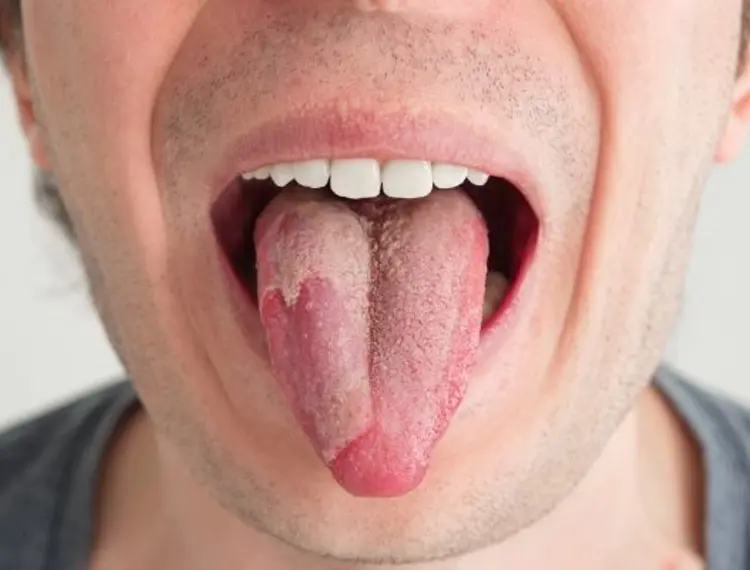
Key messages
- Red patches on your tongue may be a condition called geographic tongue.
- The condition is usually diagnosed by the way it looks and treatment is not often needed.
- It is important to have the condition diagnosed by a dentist or dental specialist.
Have you noticed red patches on the top of your tongue? These red patches may be due to a condition called geographic tongue. Other names for this condition include:
- benign migratory glossitis
- erythema migrans
- migratory stomatitis.
Geographic tongue is the most common name for this condition because the red patches can look like islands on a map.
What does geographic tongue look like?
Geographic tongue is a long-term and harmless condition. Red patches usually appear on the top and sides of the tongue. The patches are caused by loss of the tiny bumps that cover the surface of the tongue. These tiny bumps are called papillae. The borders around the red patches may be yellow or white. These borders look like they are “snaking” around the red patches.
The red patches may move from one area of the tongue to another. The patches may even go away. If you have this condition for months or years, the patches may come and go at different times.

A woman with geographic tongue. Shutterstock images
Geographic tongue is often present together with a fissured tongue. This involves deep grooves on the surface of the tongue.

A fissured tongue. Shutterstock images
How common is geographic tongue?
It is a very common condition. It affects 1-3% of the population and it can affect people of all ages.
What causes geographic tongue?
The cause of geographic tongue is not known.
It may be linked to a type of skin condition called psoriasis, but this has not been confirmed. Some researchers think that a family history, genes, and the environment may play a role in its development. Some people with geographic tongue may also have a history of asthma, eczema, hay fever, or food allergies.
How is geographic tongue diagnosed?
Geographic tongue is often diagnosed based on how the tongue and the patches look. A biopsy is not usually needed. It is important to have the diagnosis confirmed by a dentist or dental specialist.
What is a biopsy?
A biopsy is where a piece of tissue is taken from the body to be looked at more closely. A biopsy is done when an area of tissue appears not to be normal.
Does geographic tongue need treatment?
Treatment is not usually needed for geographic tongue. The condition is harmless and does not cause cancer.
Some people may get symptoms such as pain or burning. The patches may be sensitive to spicy or acidic foods. It is important for a dentist or dental specialist to make sure that there are no other possible causes of the symptoms. When a person with geographic tongue is stressed or unwell, the condition can get worse.
If treatment is needed, there are some medicines that can help. These include steroid-containing mouthwashes or numbing creams that are rubbed on the surface of the tongue. It is important that treatment is provided by a health professional.
Should I see a dentist?
If your tongue begins to look or feel different, it is important to have this checked by a dentist. There are other conditions that also cause red patches on the tongue. It is important that these are ruled out. Other conditions may include oral cancer, immune diseases and inflammatory disorders.


